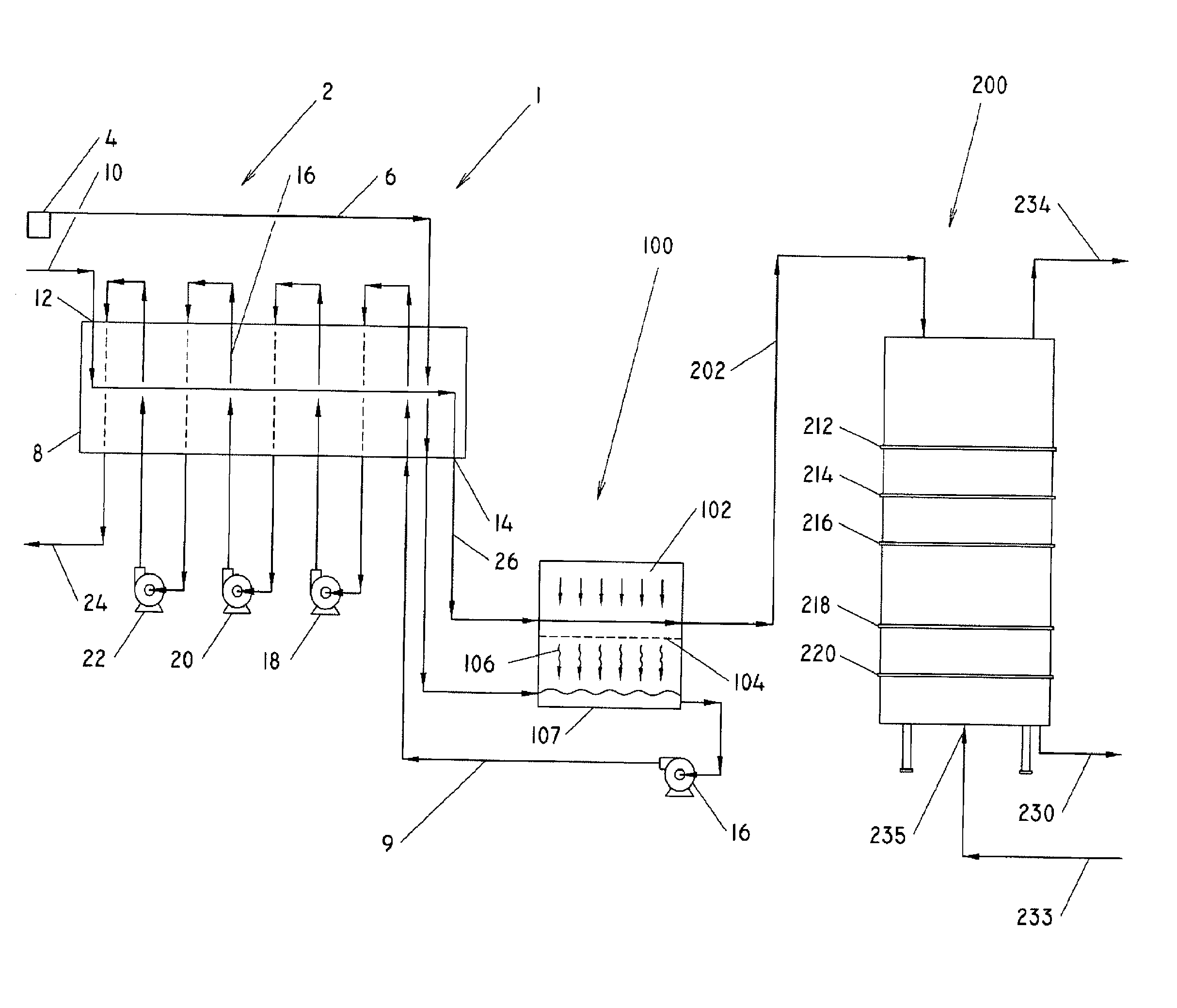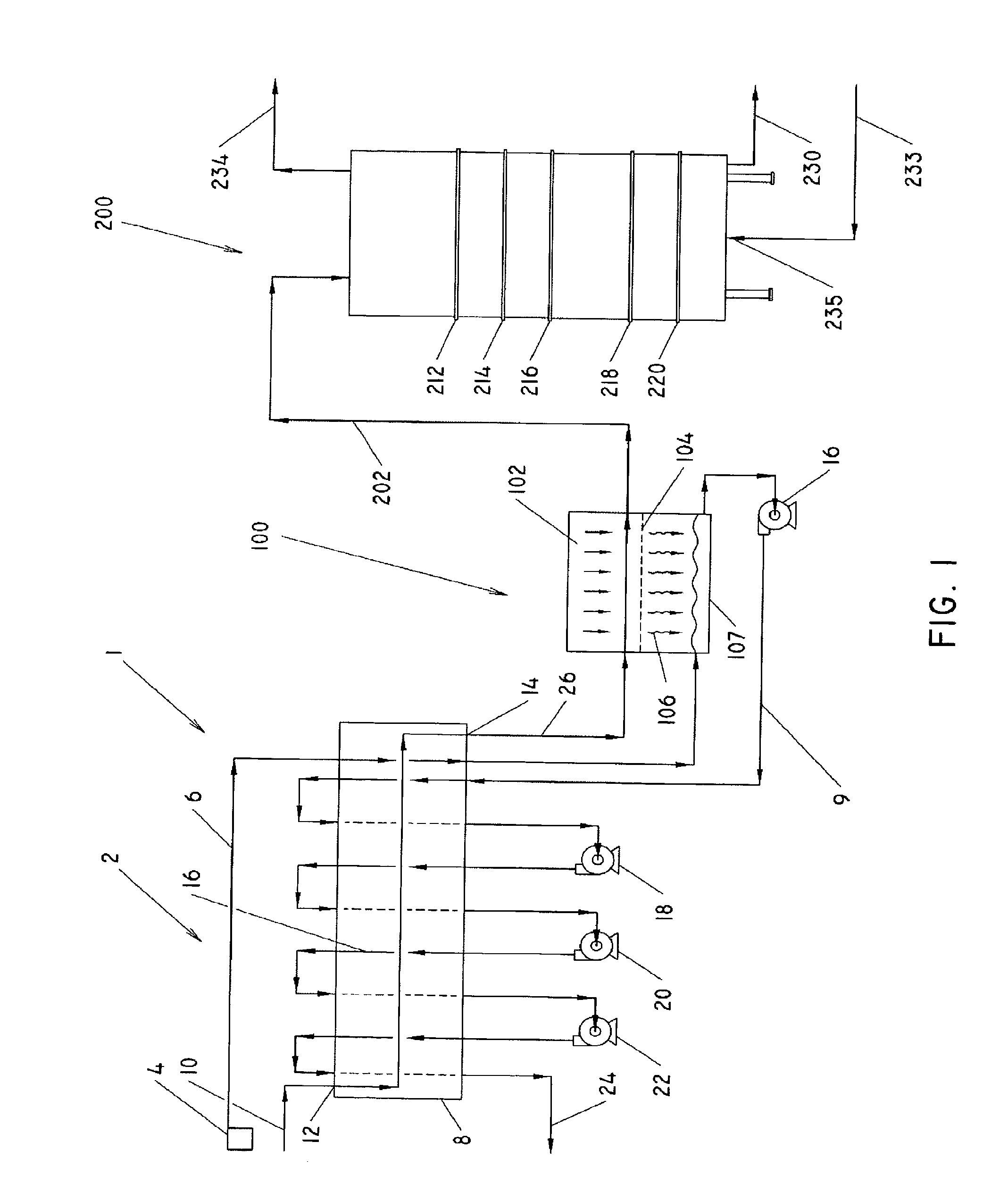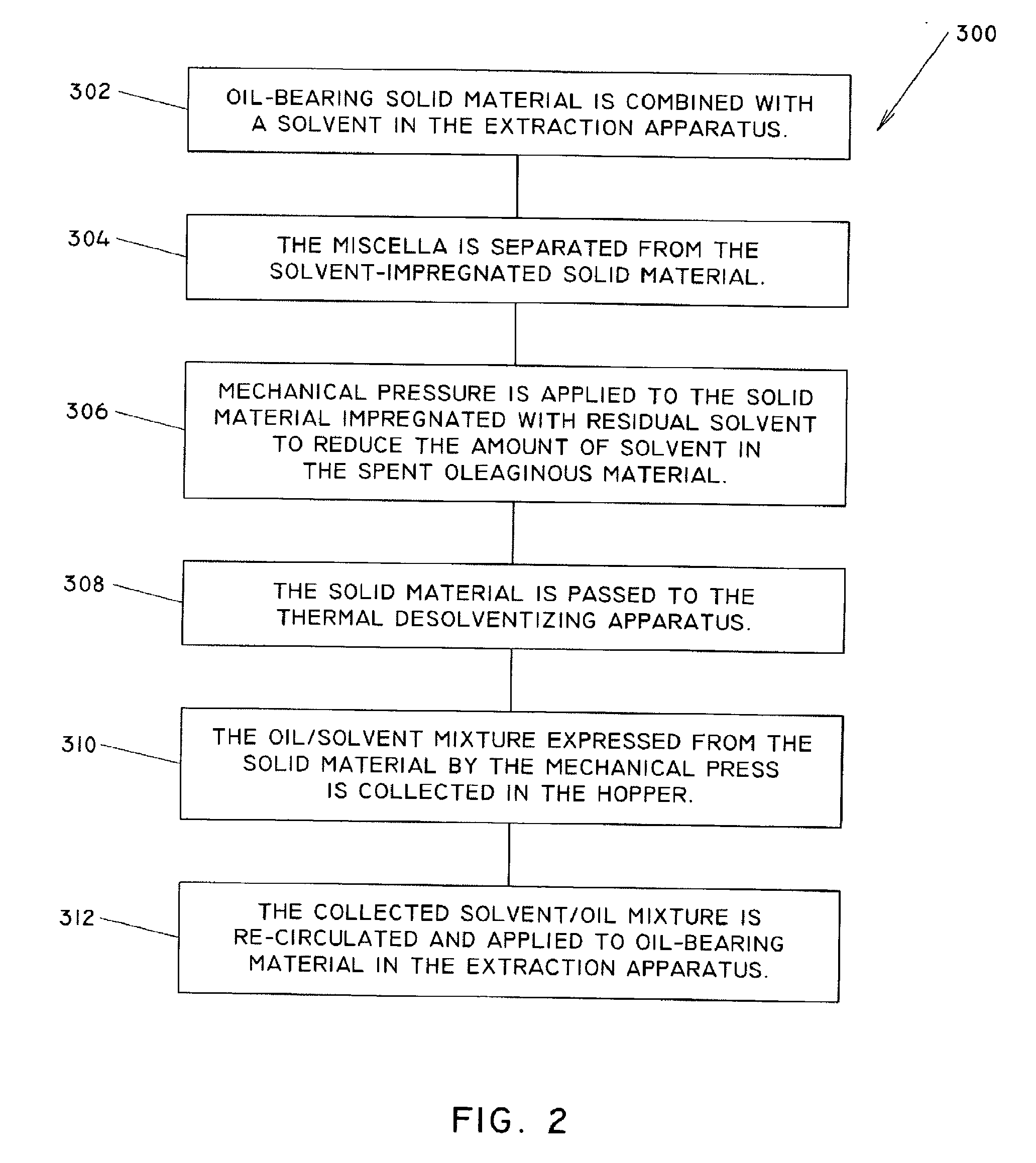Mechanical Partial Desolventizing System and Process
a partial desolventization and mechanical technology, applied in the field of system and process, can solve the problems of not being able to effectively use a vacuum to pull additional solvent from the spent solids, and experience the concept, so as to save capital cost in addition to thermal energy and reduce energy cos
- Summary
- Abstract
- Description
- Claims
- Application Information
AI Technical Summary
Benefits of technology
Problems solved by technology
Method used
Image
Examples
Embodiment Construction
[0021]The invention will now be described in the following detailed description with reference to the drawings, wherein preferred embodiments are described in detail to enable practice of the invention. Although the invention is described with reference to these specific preferred embodiments, it will be understood that the invention is not limited to these preferred embodiments. But to the contrary, the invention includes numerous alternatives, modifications and equivalents as will become apparent from consideration of the following detailed description.
[0022]Turning now to FIG. 1, there is shown a schematic diagram illustrating an extraction and desoventizing system, indicated generally at 1, for use with oleaginous material. The system 1 has three primary components, namely an extraction apparatus 2, a mechanical partial desolventizing apparatus 100, and a thermal desolventizing apparatus 200. As will be described below, the system 1 extracts oil from oleaginous materials with a ...
PUM
| Property | Measurement | Unit |
|---|---|---|
| temperature | aaaaa | aaaaa |
| temperature | aaaaa | aaaaa |
| weight | aaaaa | aaaaa |
Abstract
Description
Claims
Application Information
 Login to View More
Login to View More - R&D
- Intellectual Property
- Life Sciences
- Materials
- Tech Scout
- Unparalleled Data Quality
- Higher Quality Content
- 60% Fewer Hallucinations
Browse by: Latest US Patents, China's latest patents, Technical Efficacy Thesaurus, Application Domain, Technology Topic, Popular Technical Reports.
© 2025 PatSnap. All rights reserved.Legal|Privacy policy|Modern Slavery Act Transparency Statement|Sitemap|About US| Contact US: help@patsnap.com



